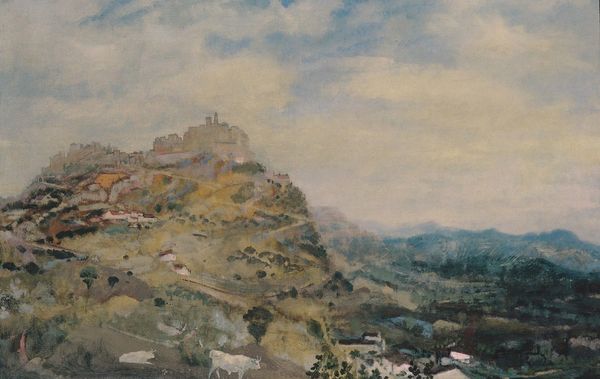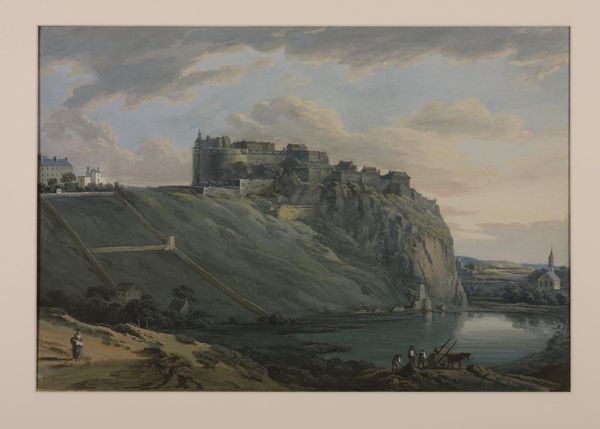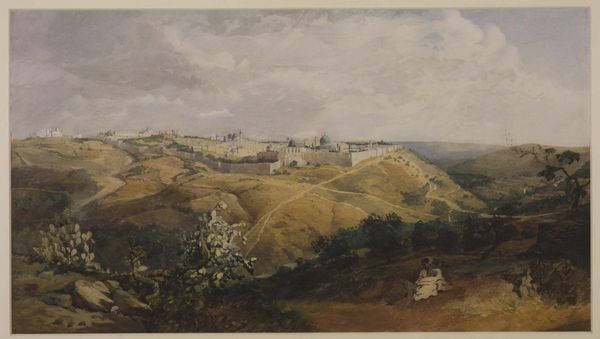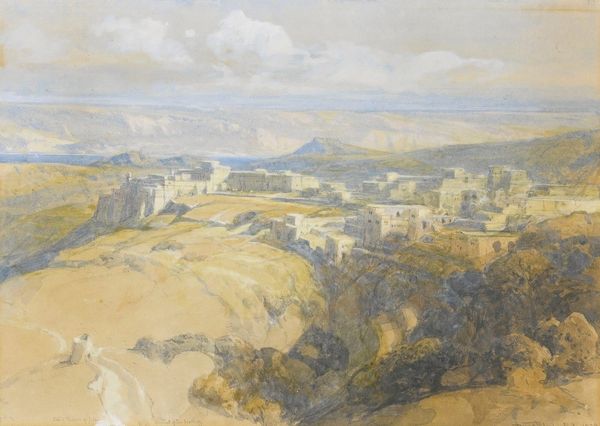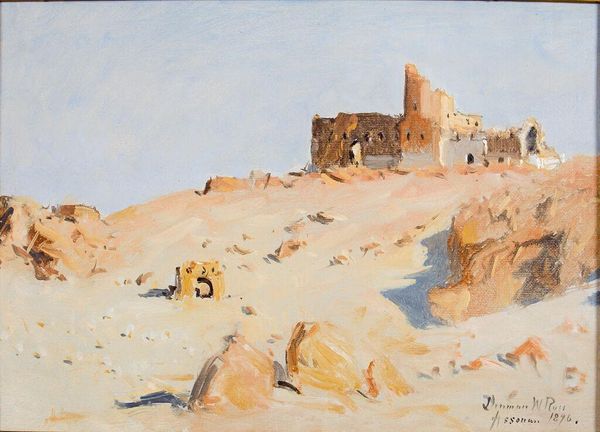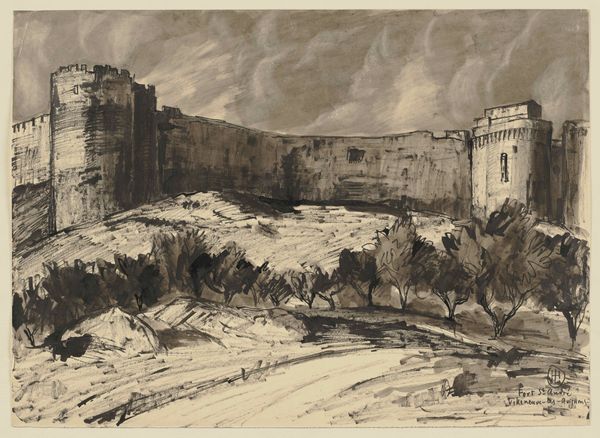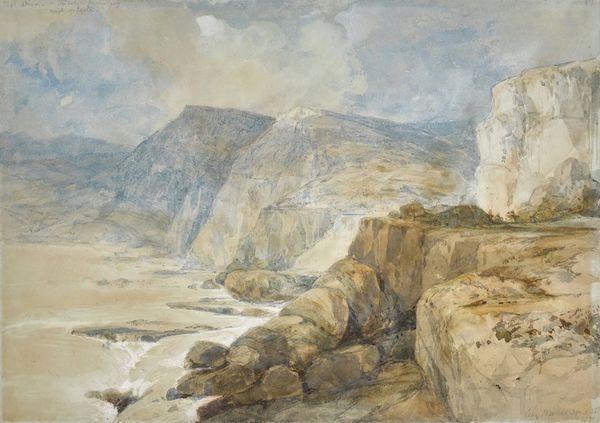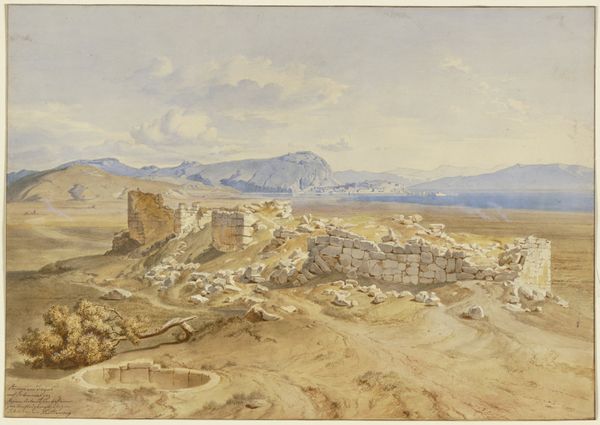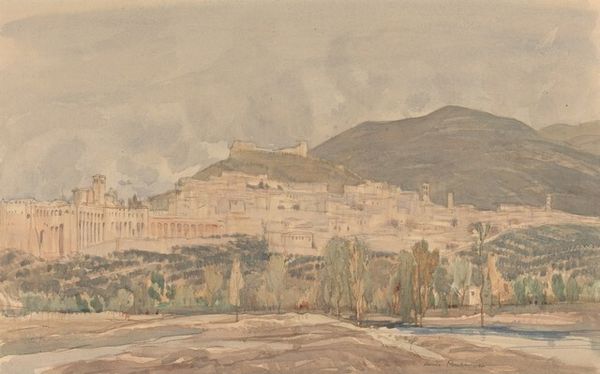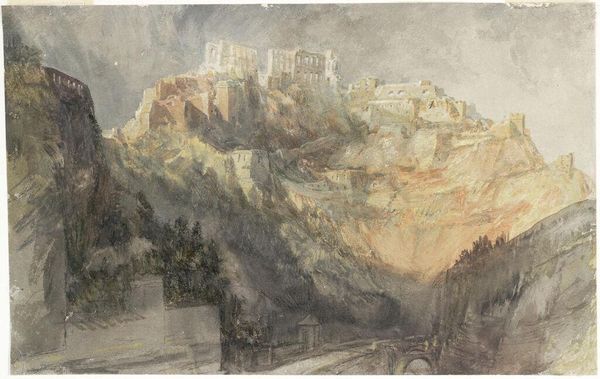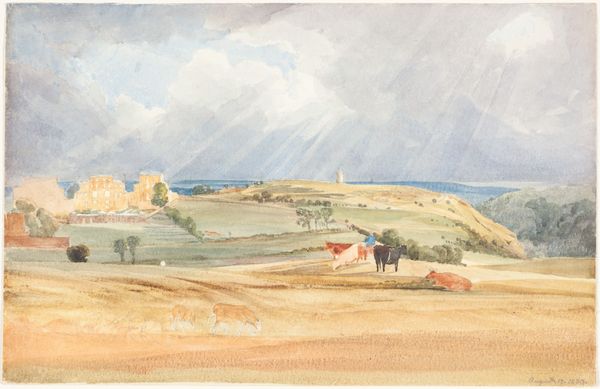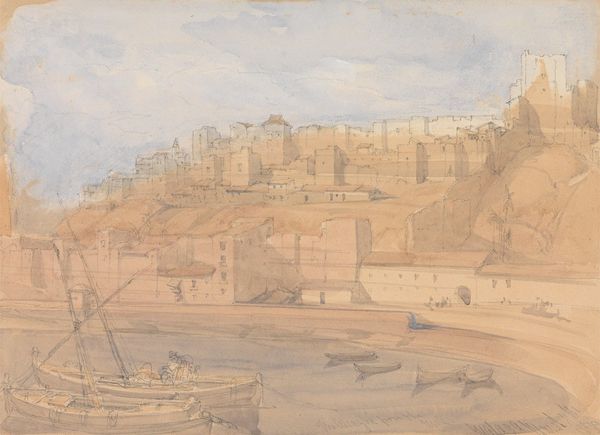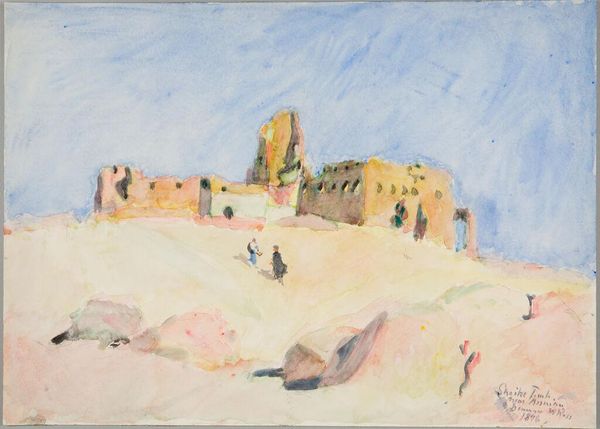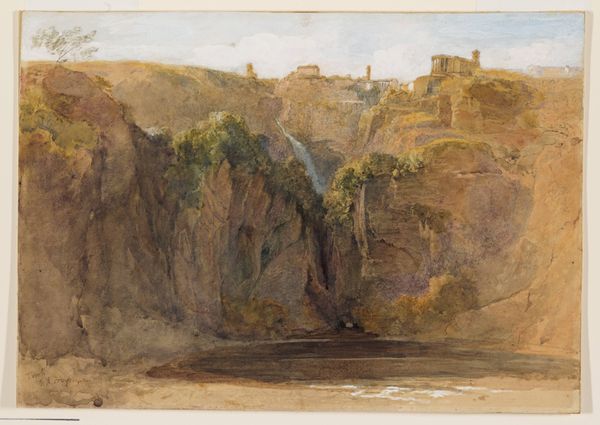
Dimensions: support: 240 x 537 mm
Copyright: CC-BY-NC-ND 4.0 DEED, Photo: Tate
Editor: This is William James Müller's watercolour, Lycia: The Citadel of Tlos. I'm struck by the way he captures the ruins; they seem to melt back into the landscape. What does this piece evoke for you? Curator: It speaks to the colonial gaze, doesn't it? The picturesque rendering of the ancient site almost erases the contemporary inhabitants and their relationship to this space, reducing it to a romantic backdrop. Müller's perspective reflects a broader historical pattern of appropriation and erasure in depictions of the 'Orient.' Editor: So, the very act of painting it becomes a statement? Curator: Precisely. By focusing solely on the aesthetic decay of the citadel, he overlooks the living history and socio-political realities of the Lycian people. The ruin becomes a symbol of a bygone era, conveniently divorced from its continuing cultural significance. Editor: That’s a perspective I hadn’t considered. It really changes how I see the work. Curator: It’s a reminder that art is never neutral. Understanding the context and power dynamics at play is crucial to a fuller appreciation.
